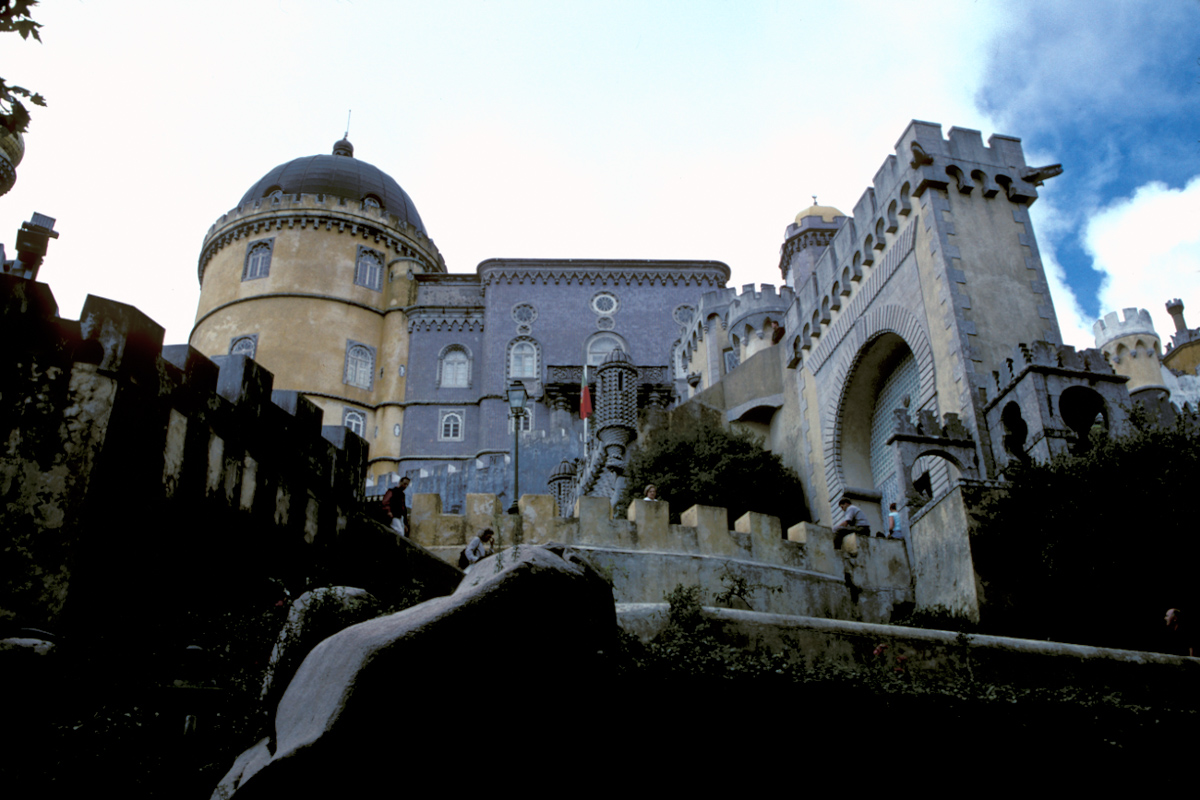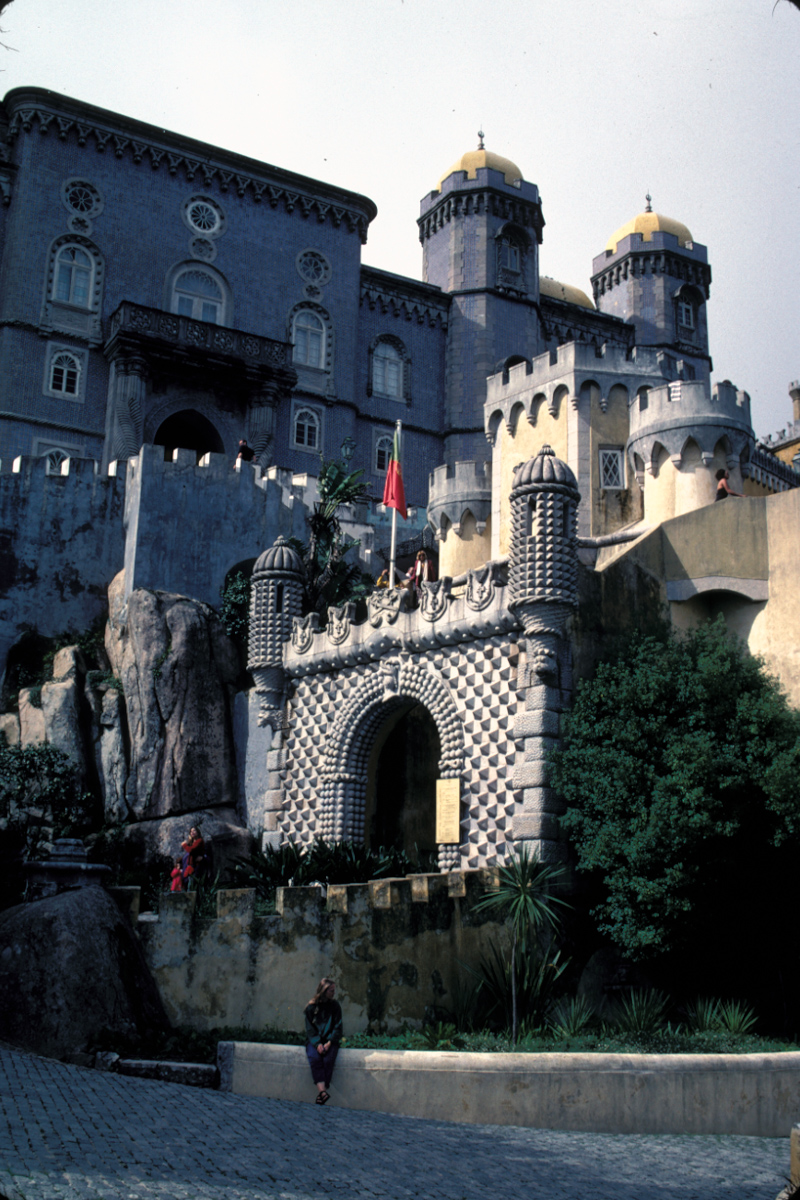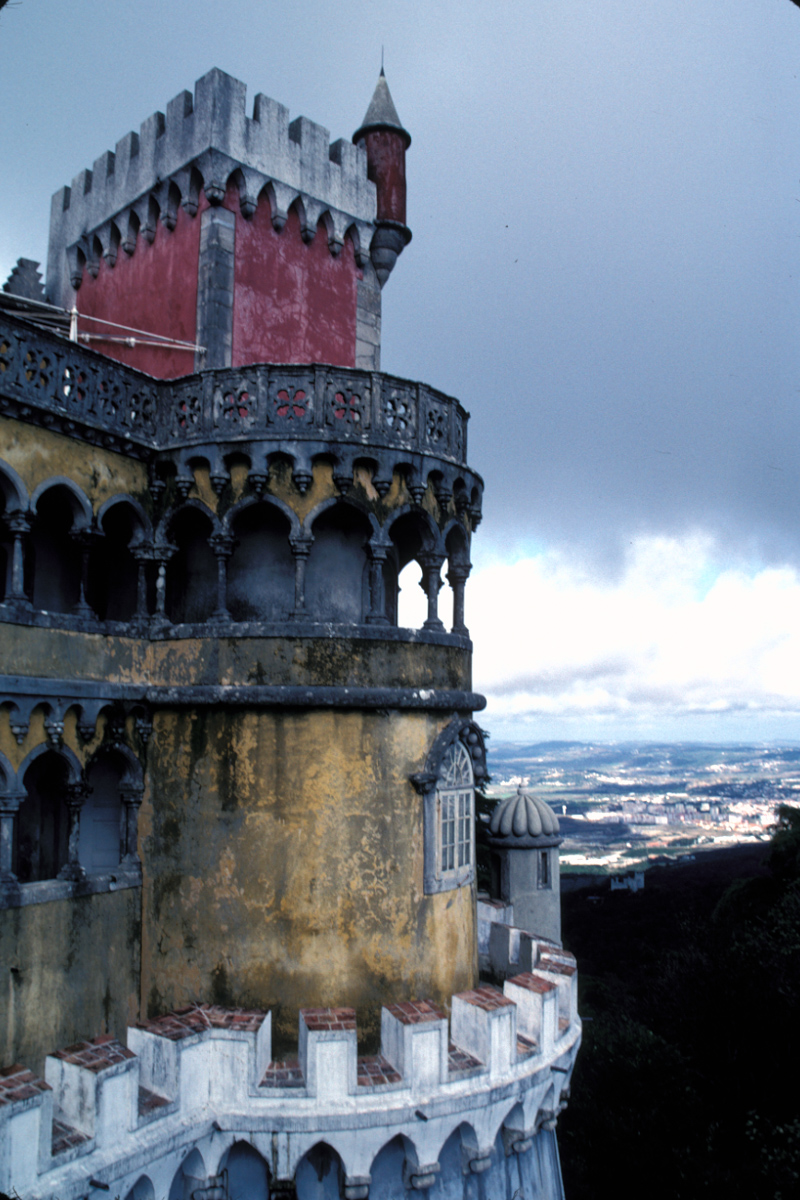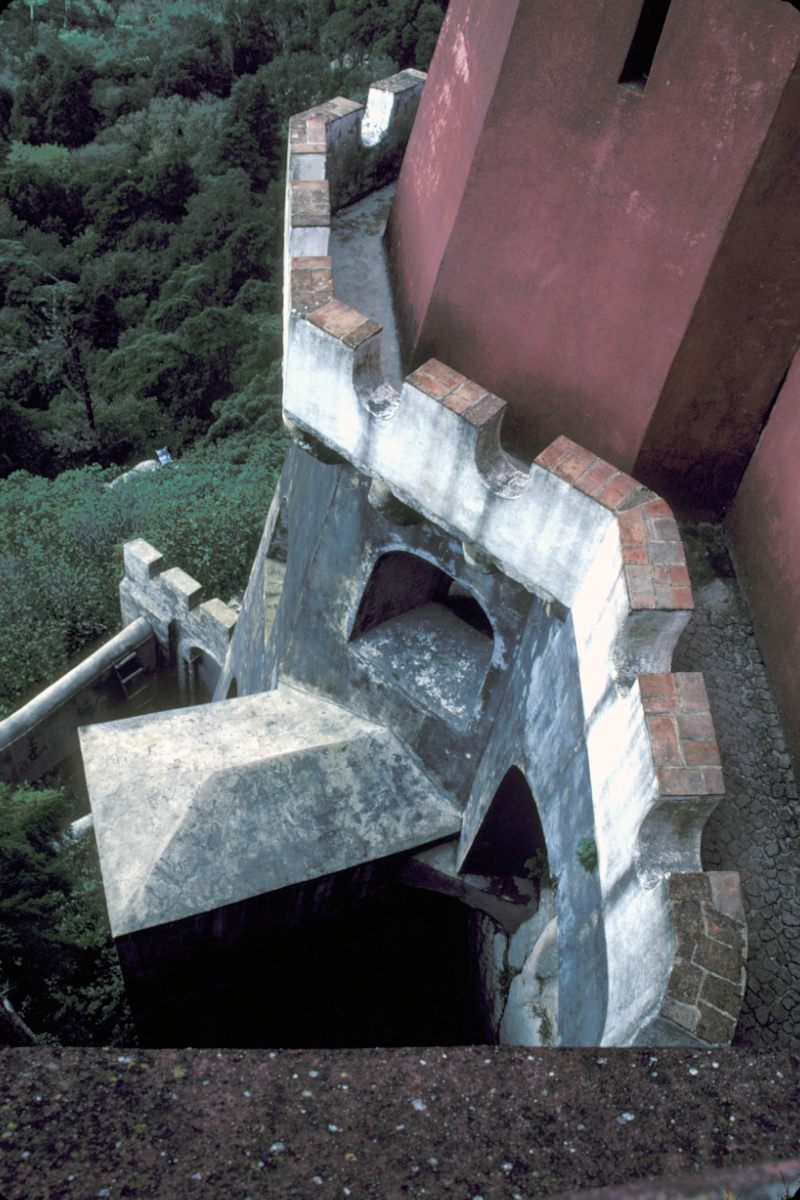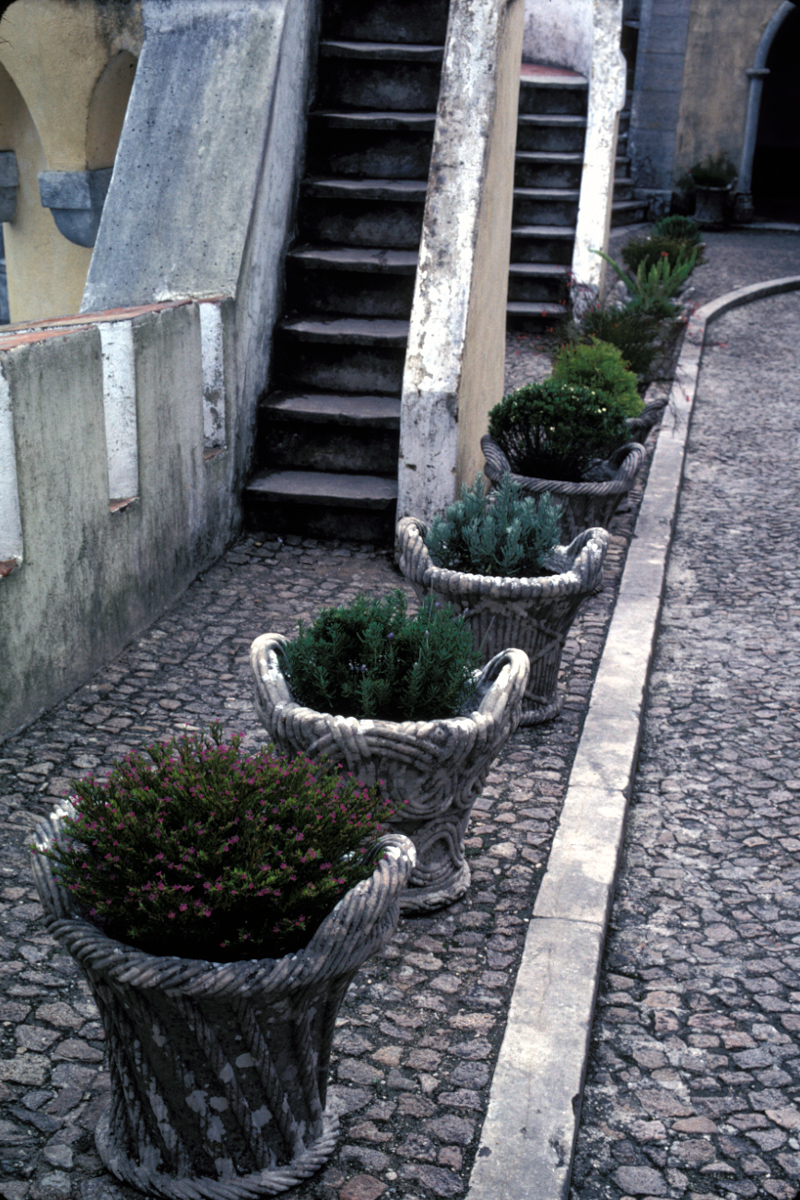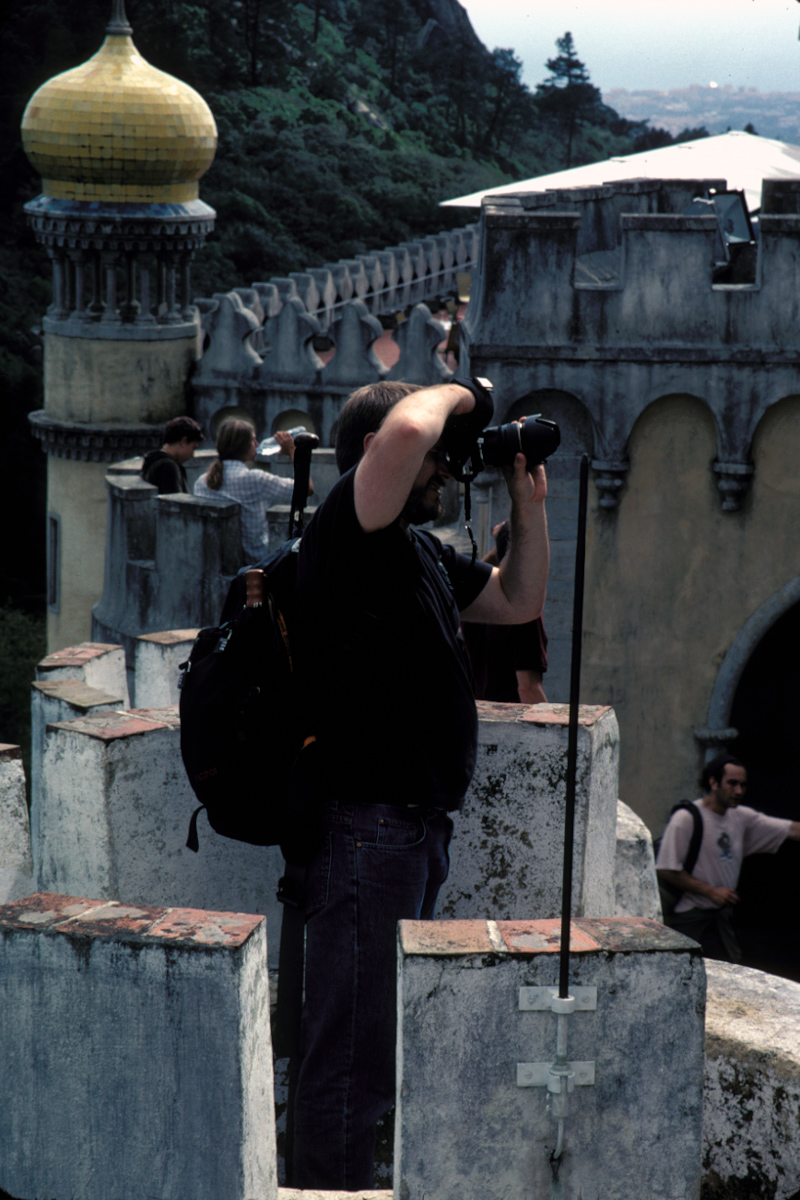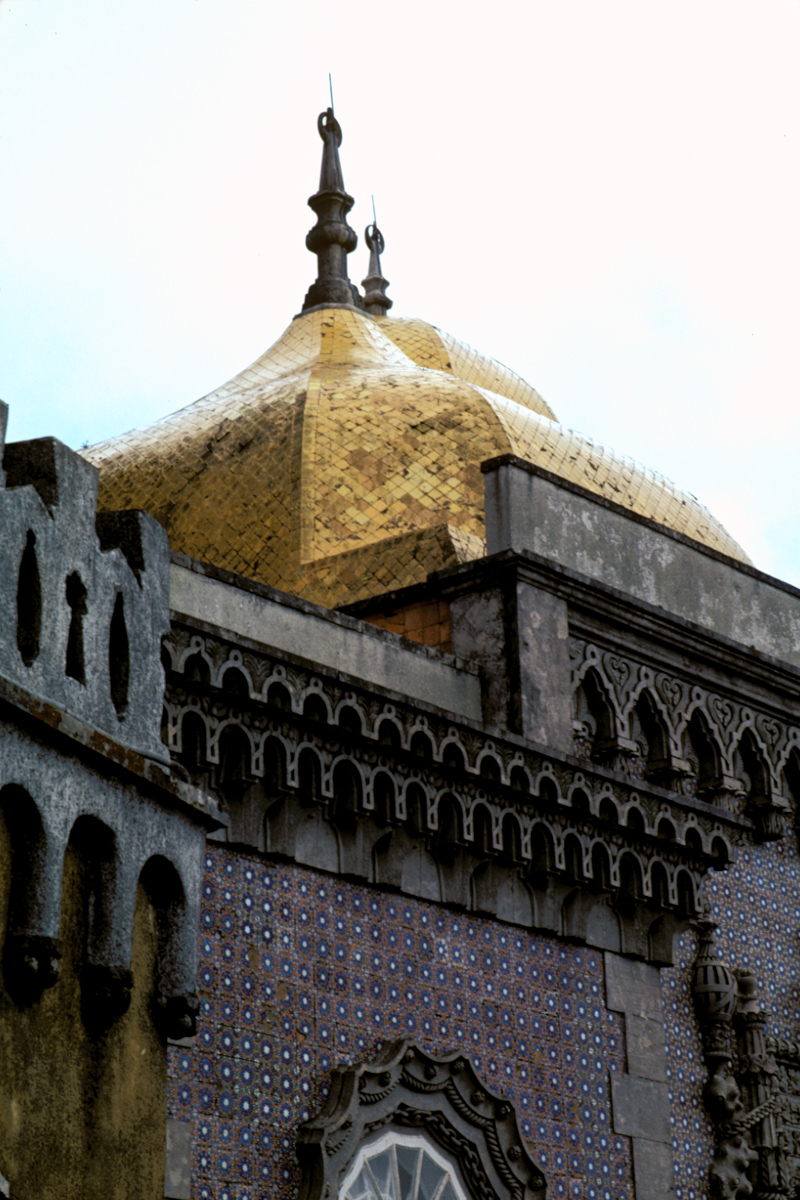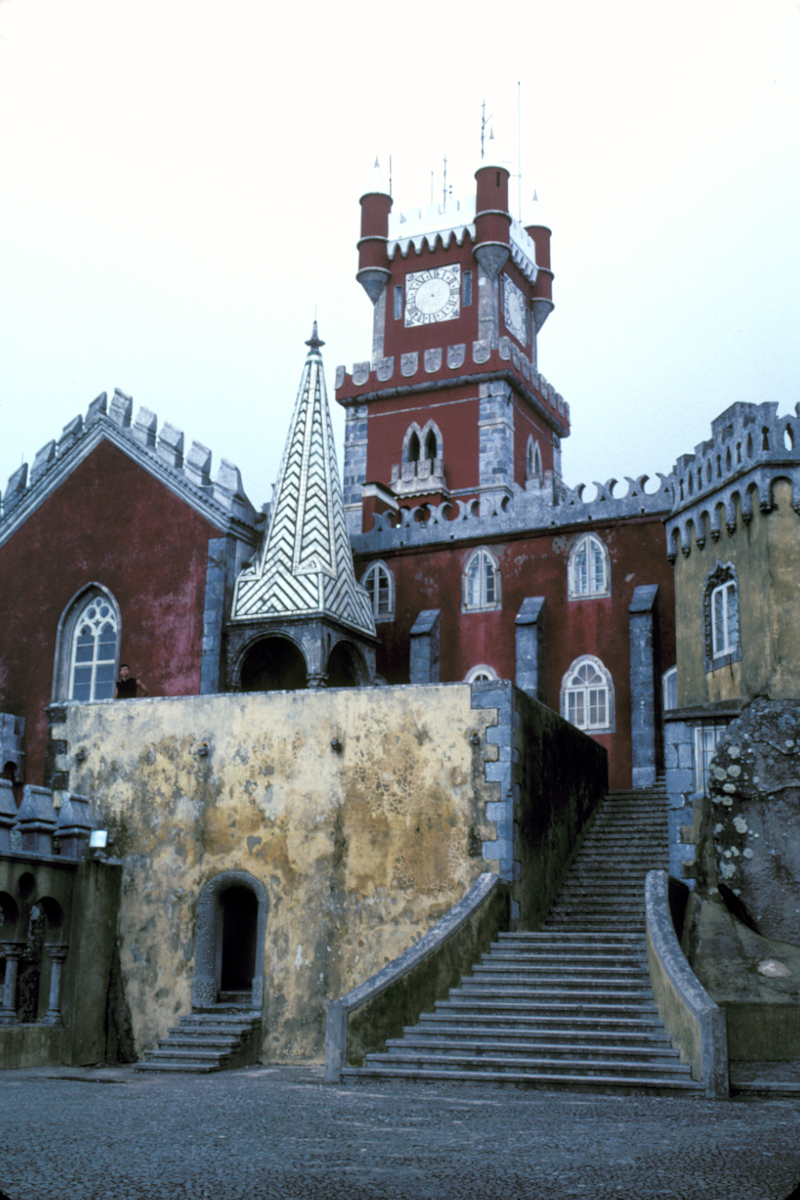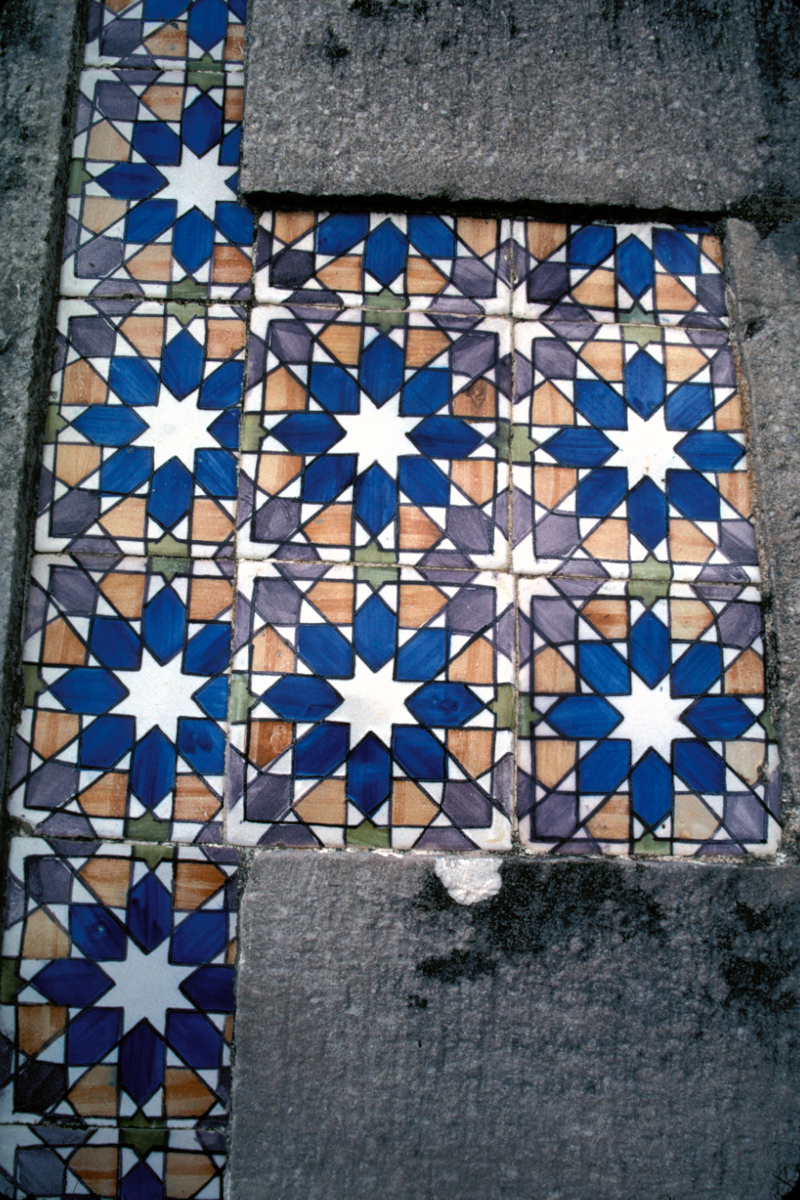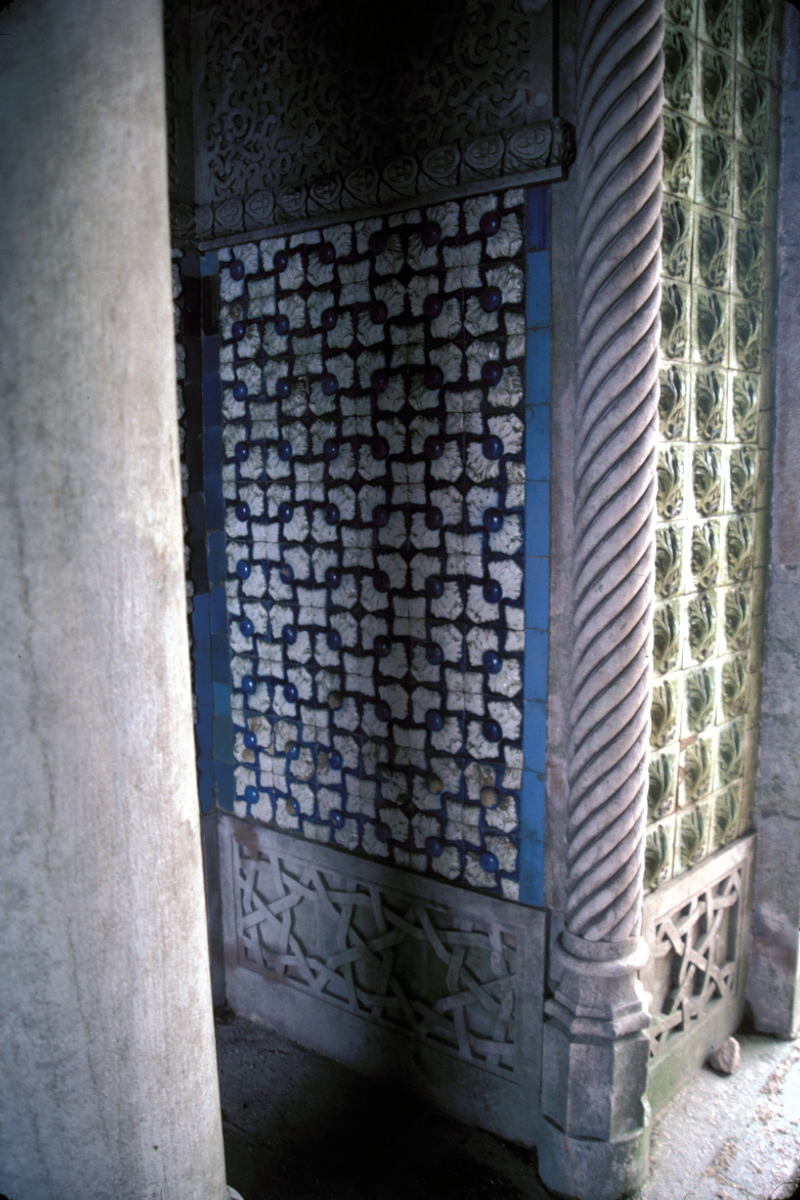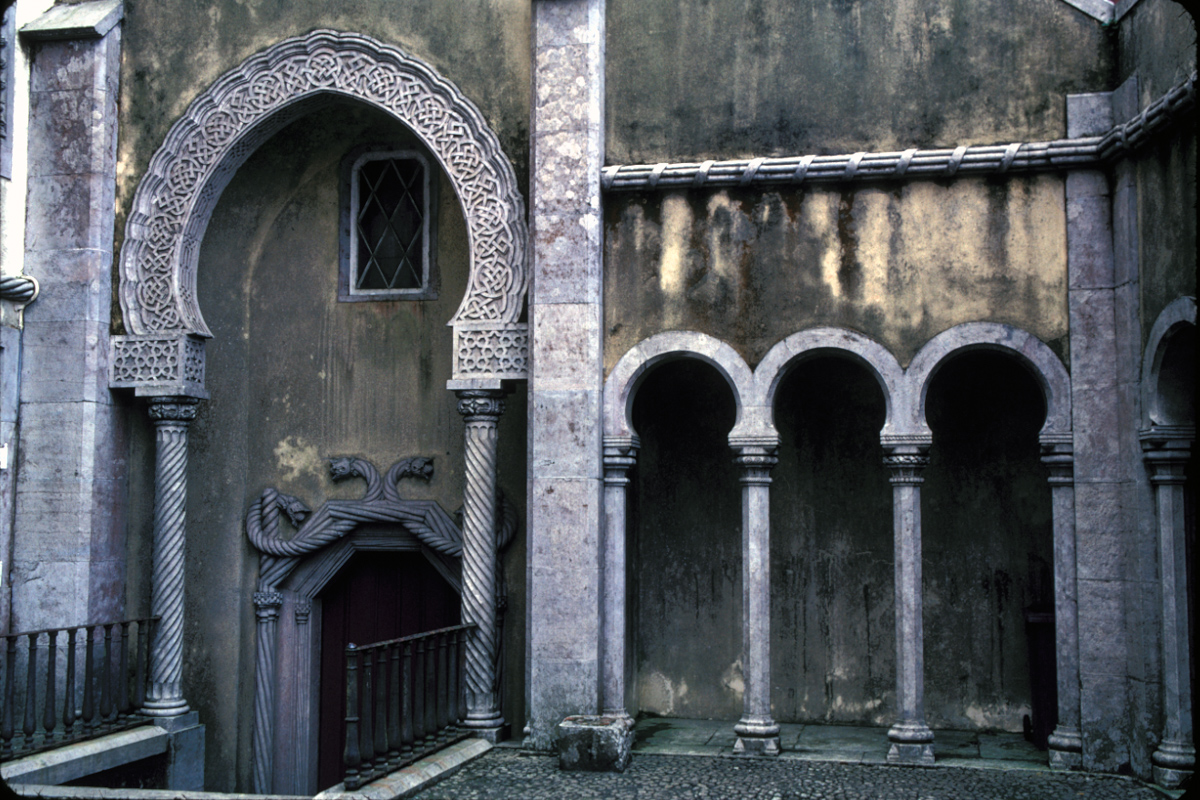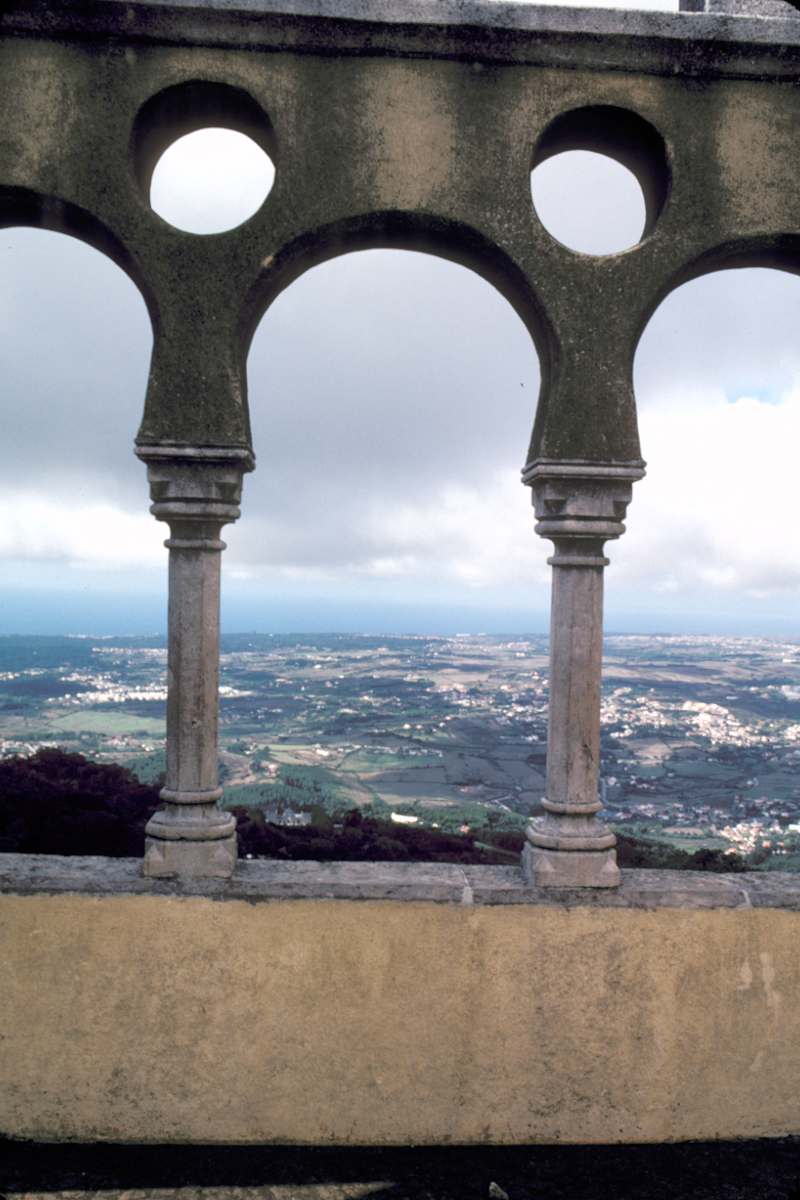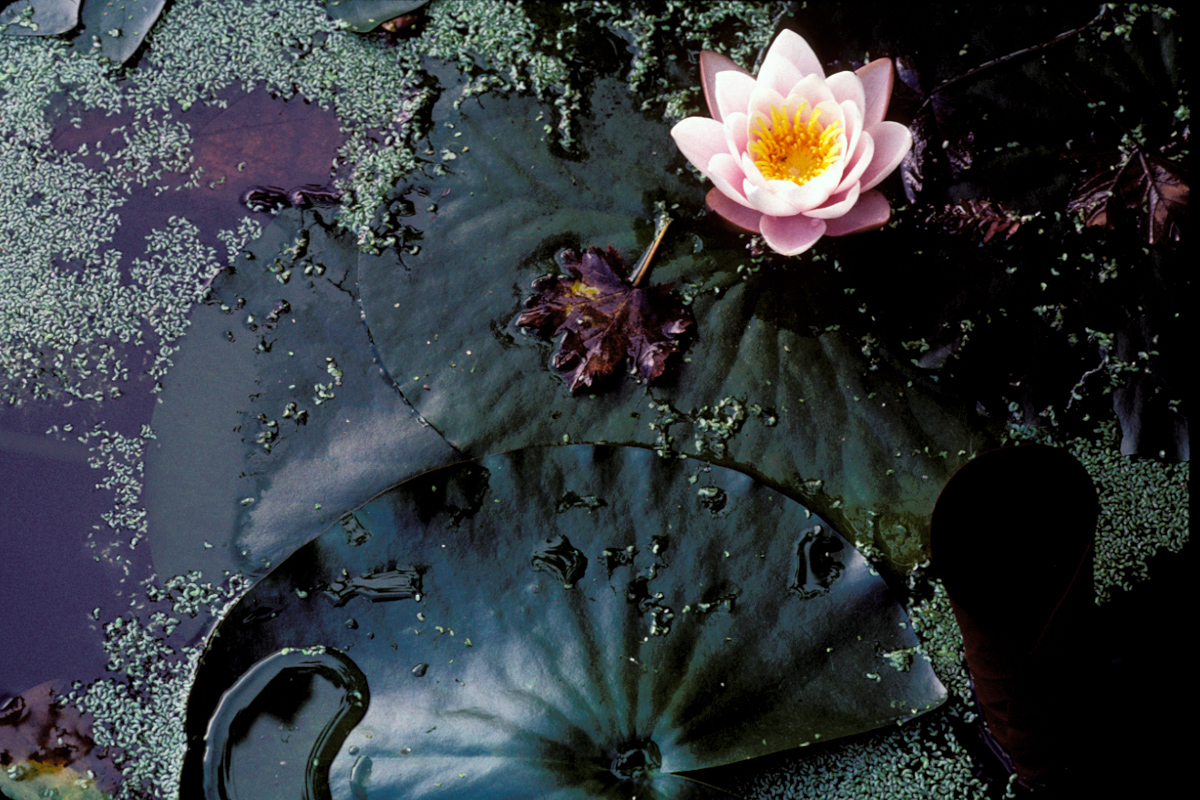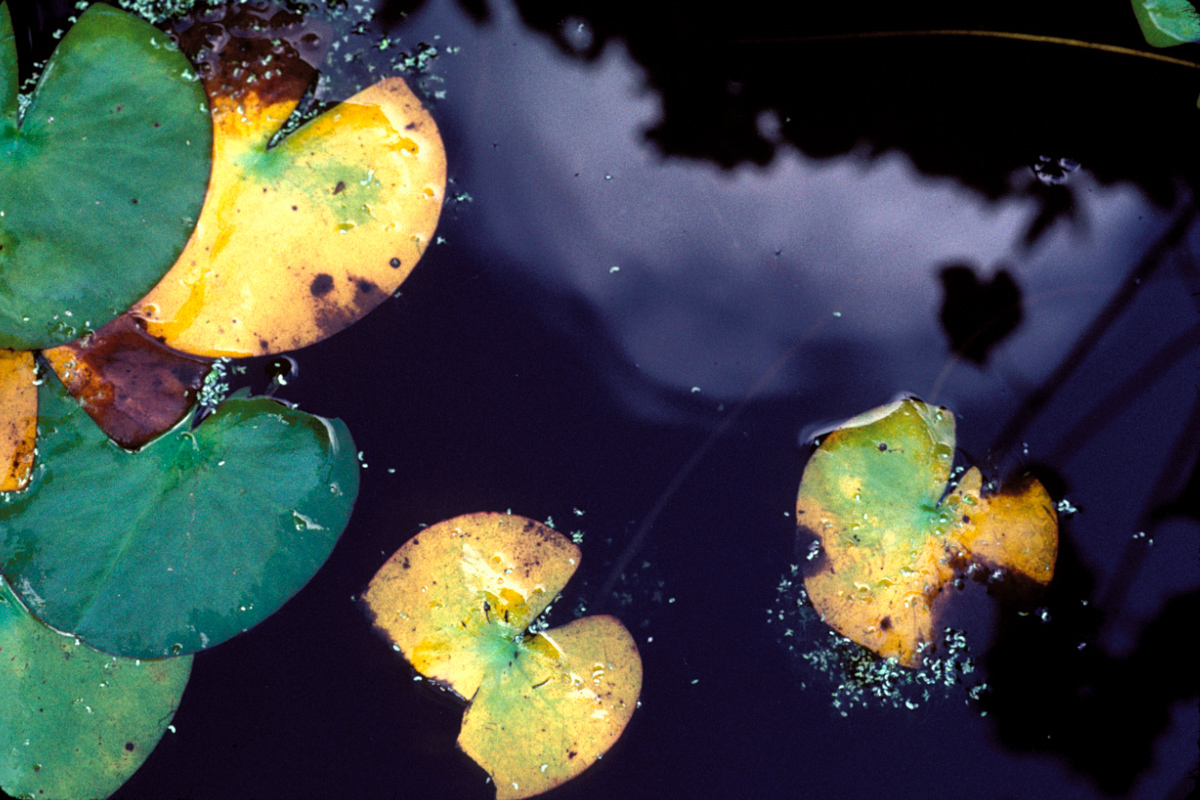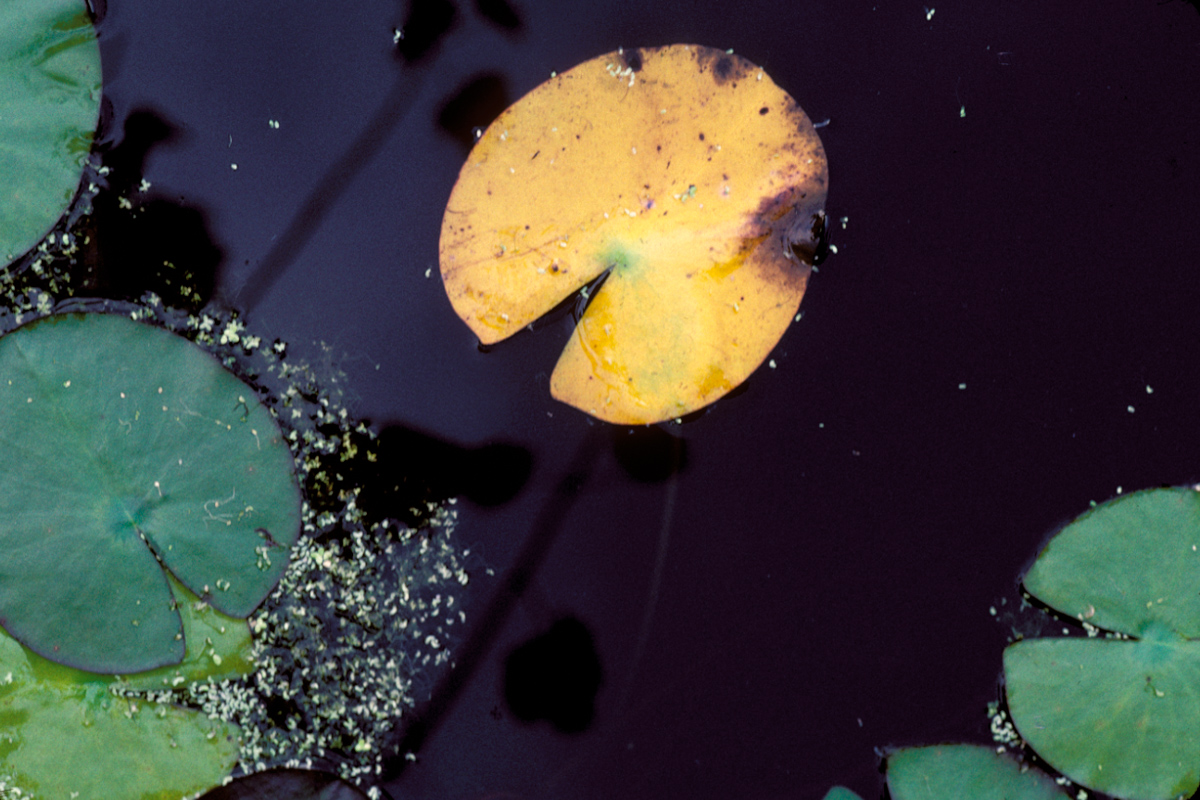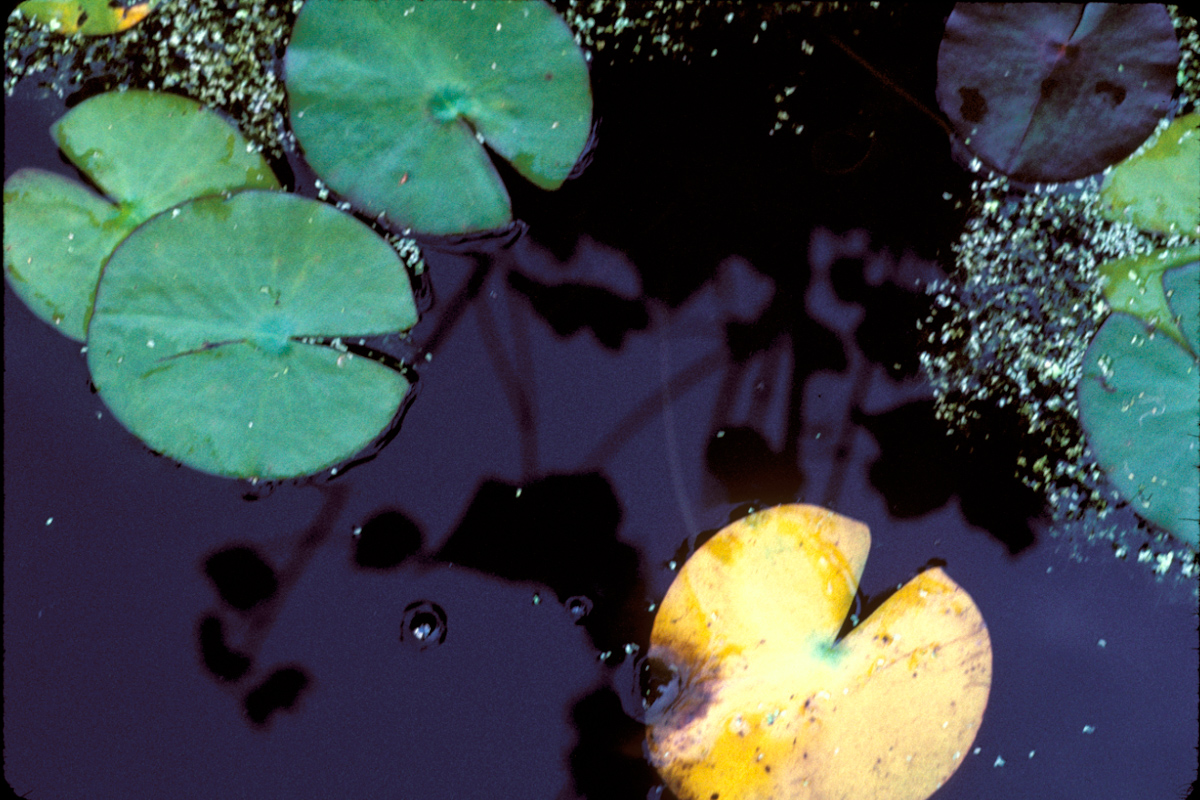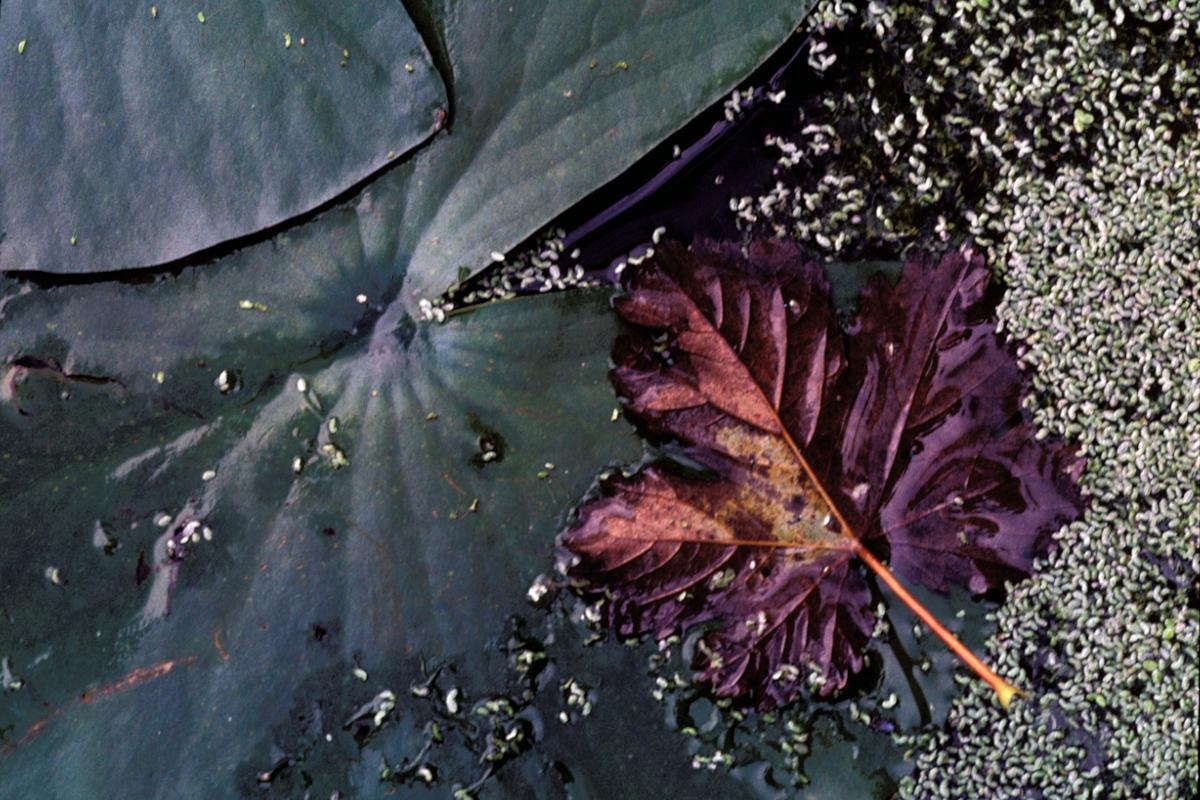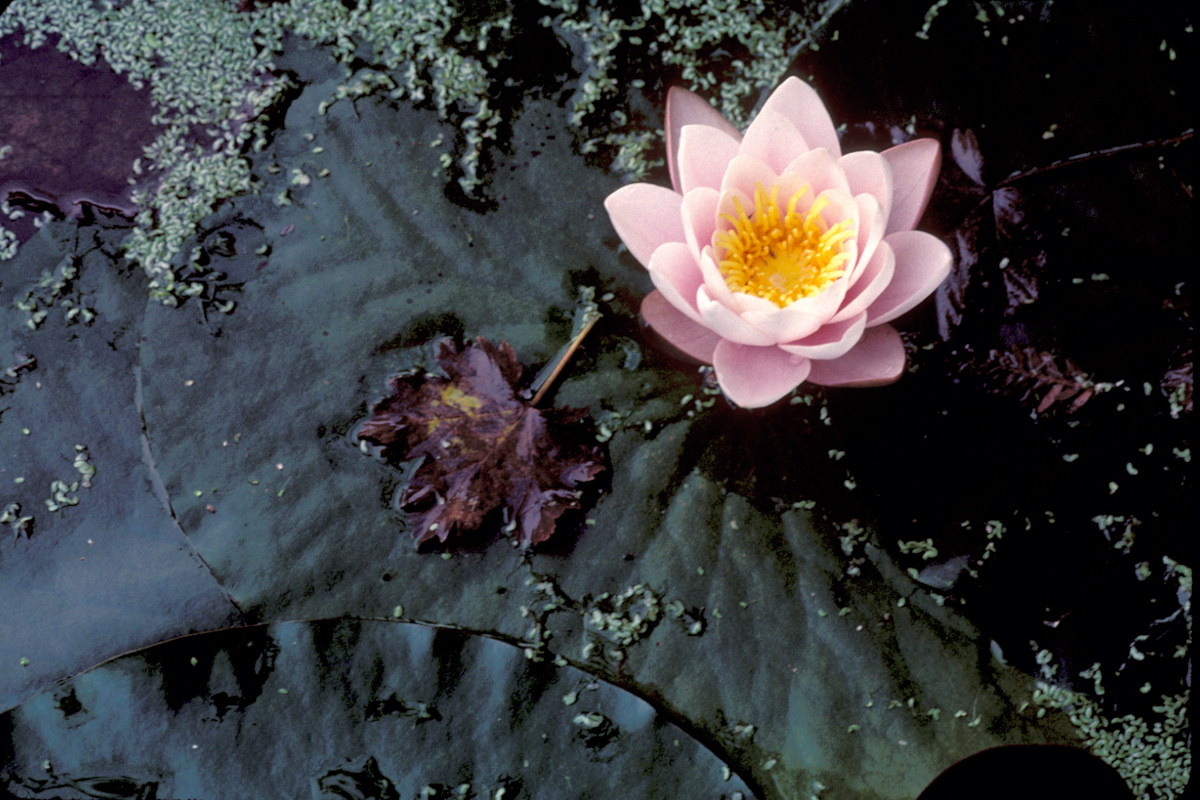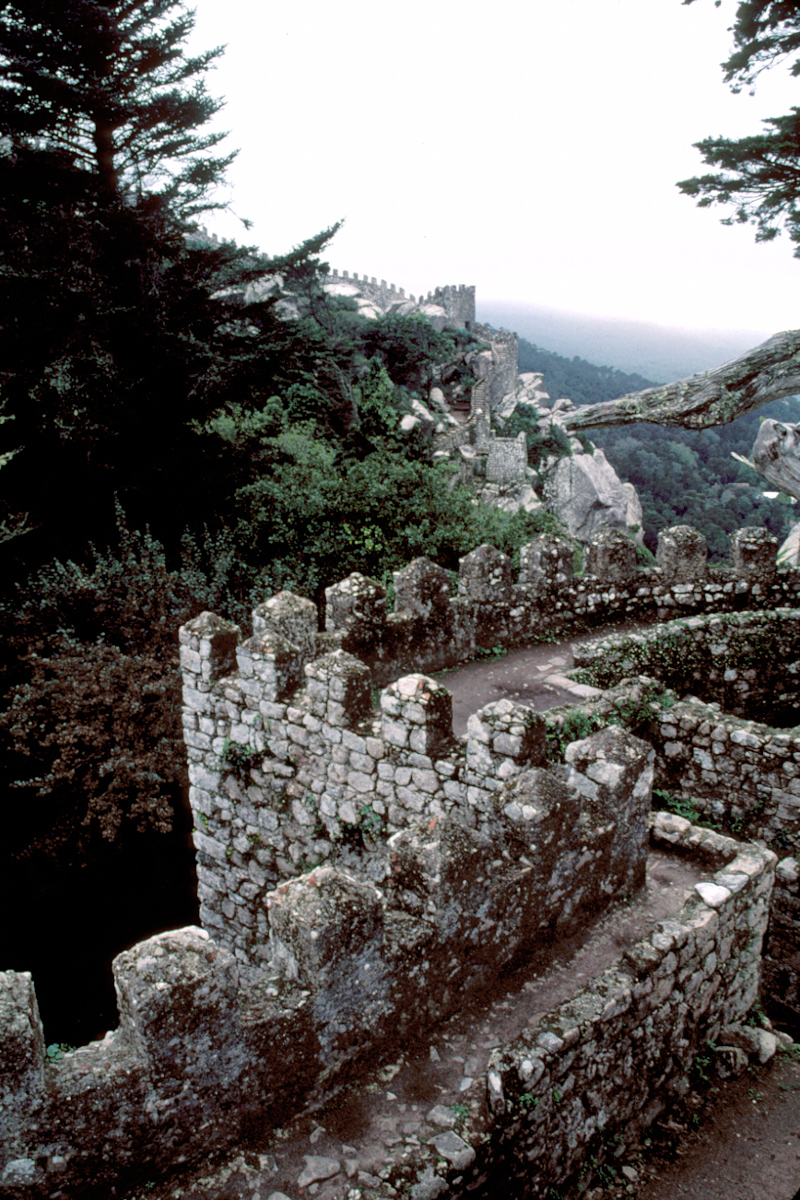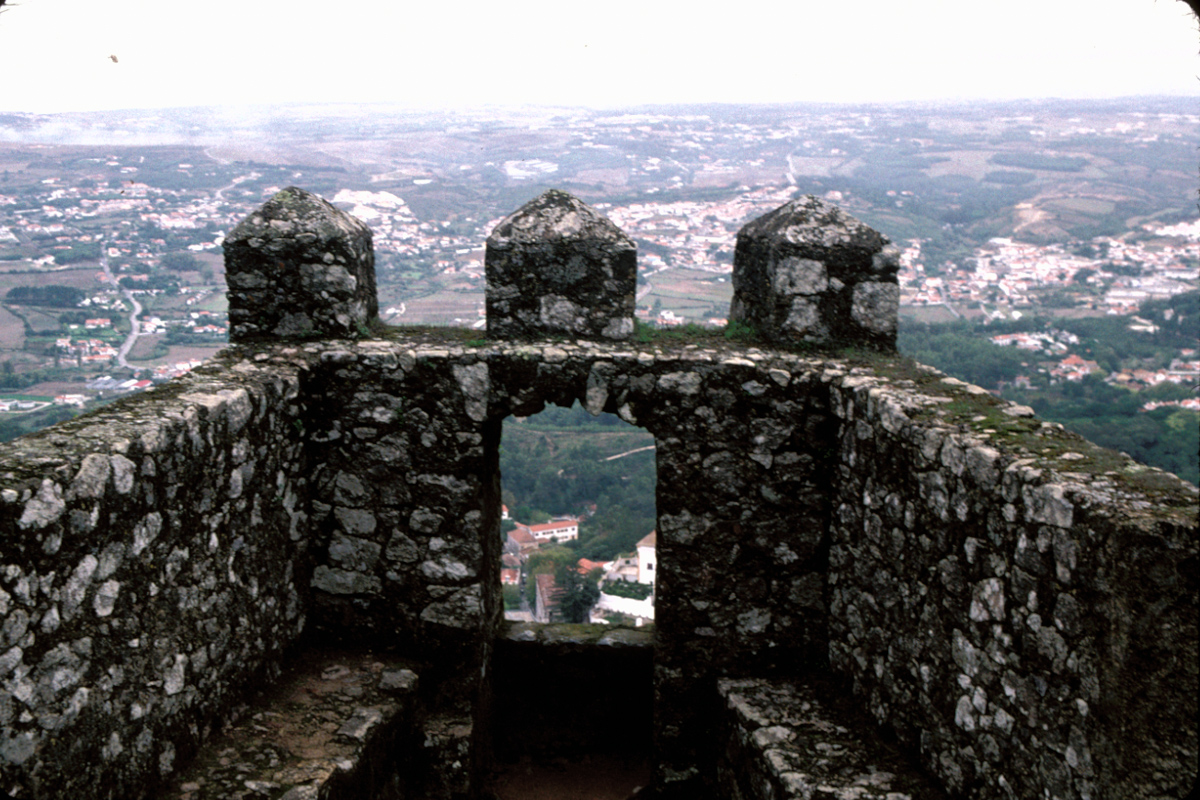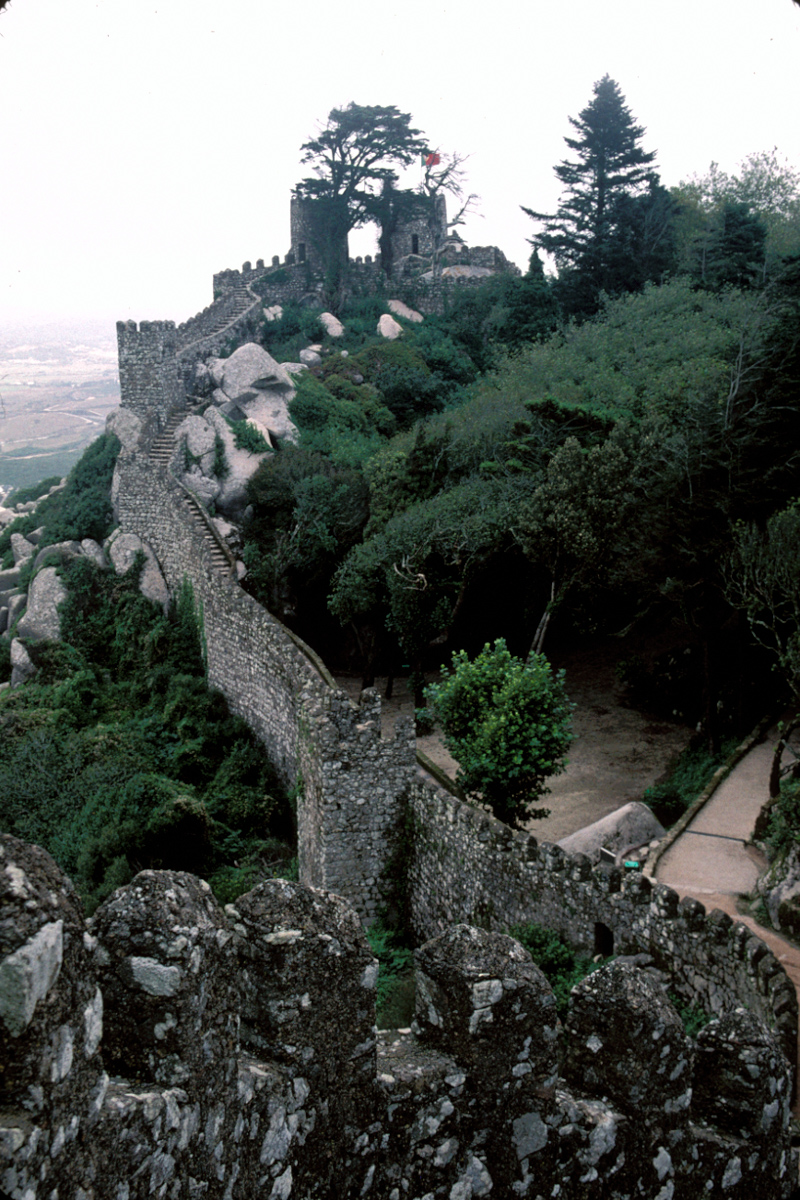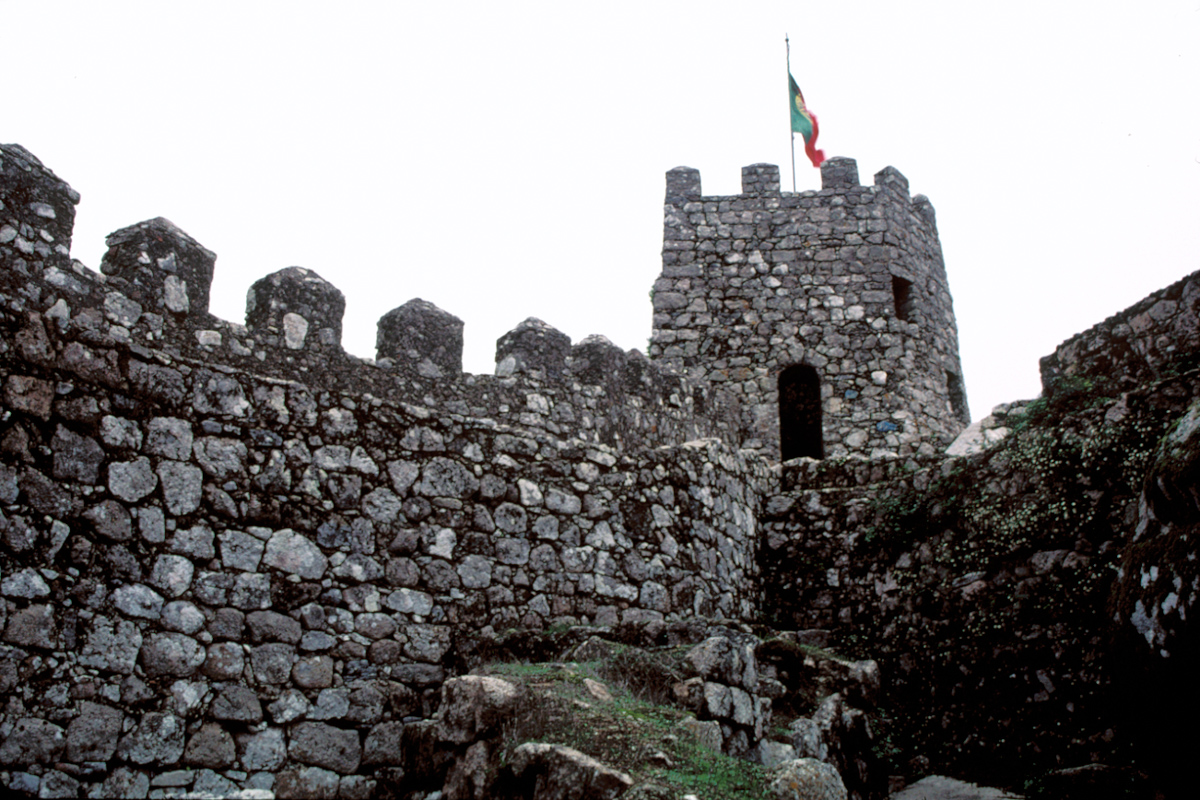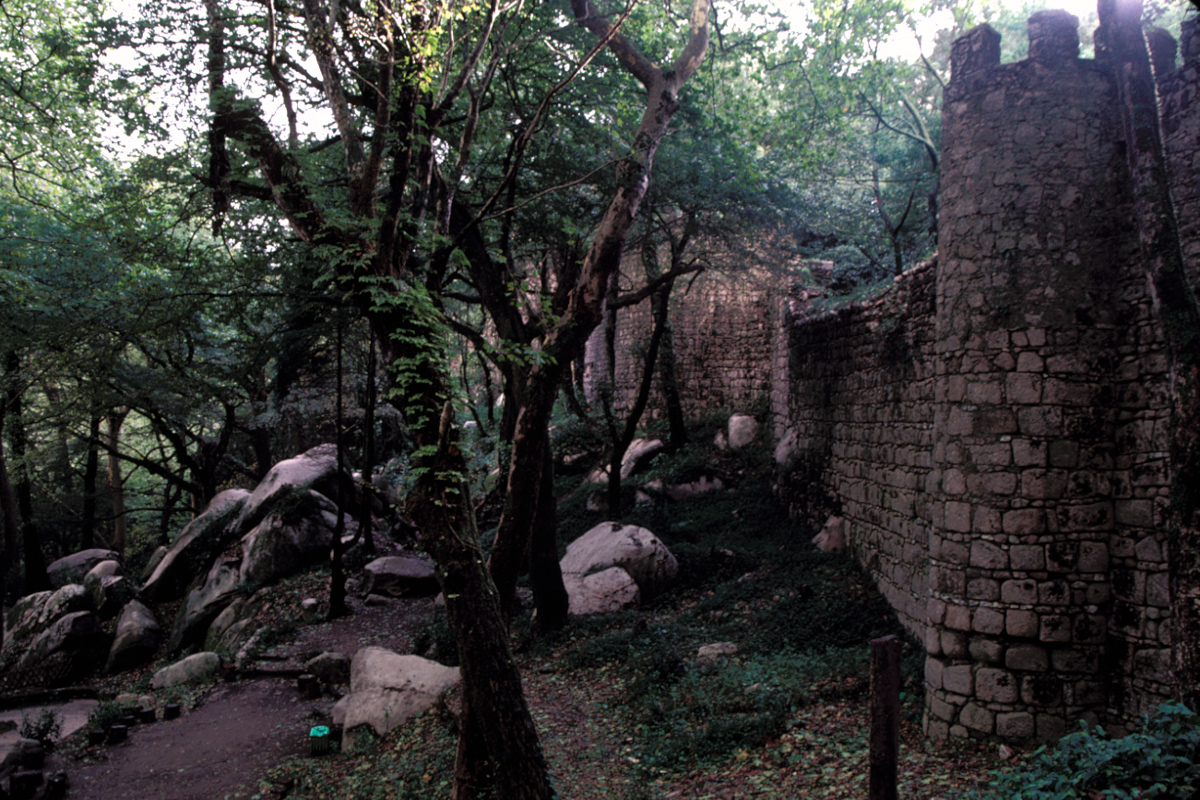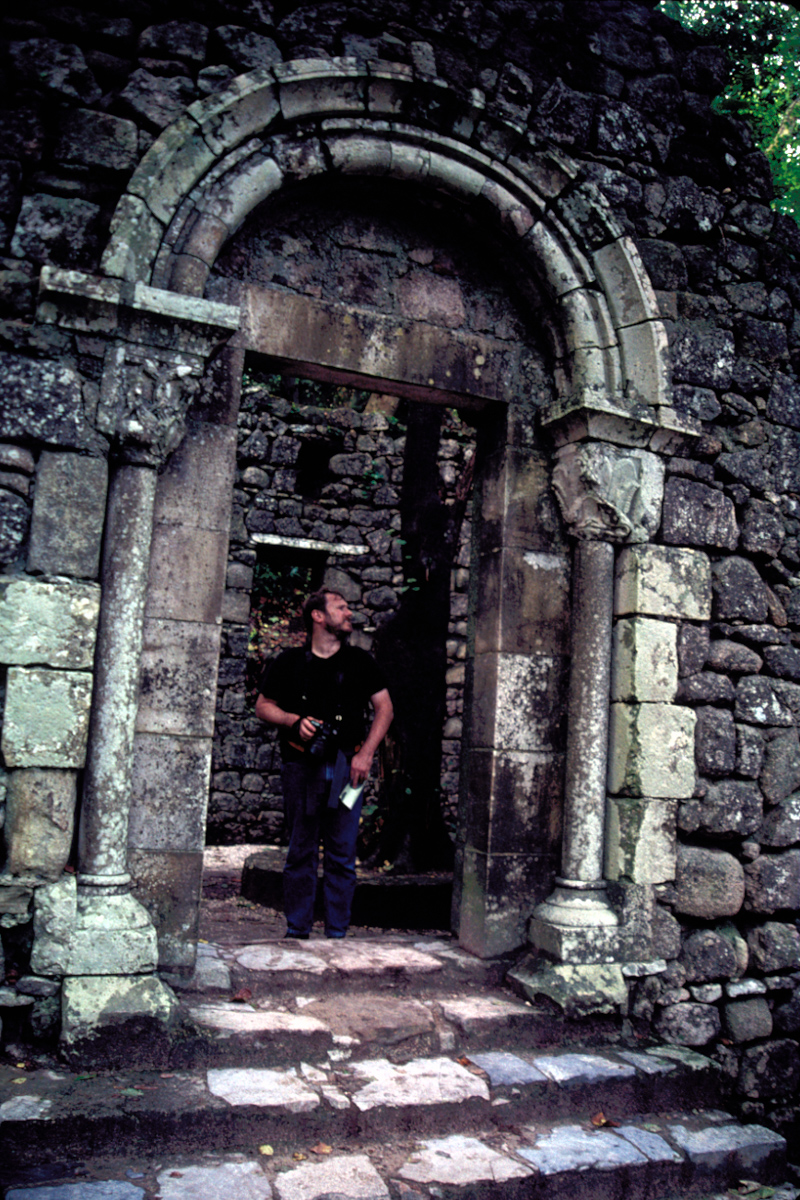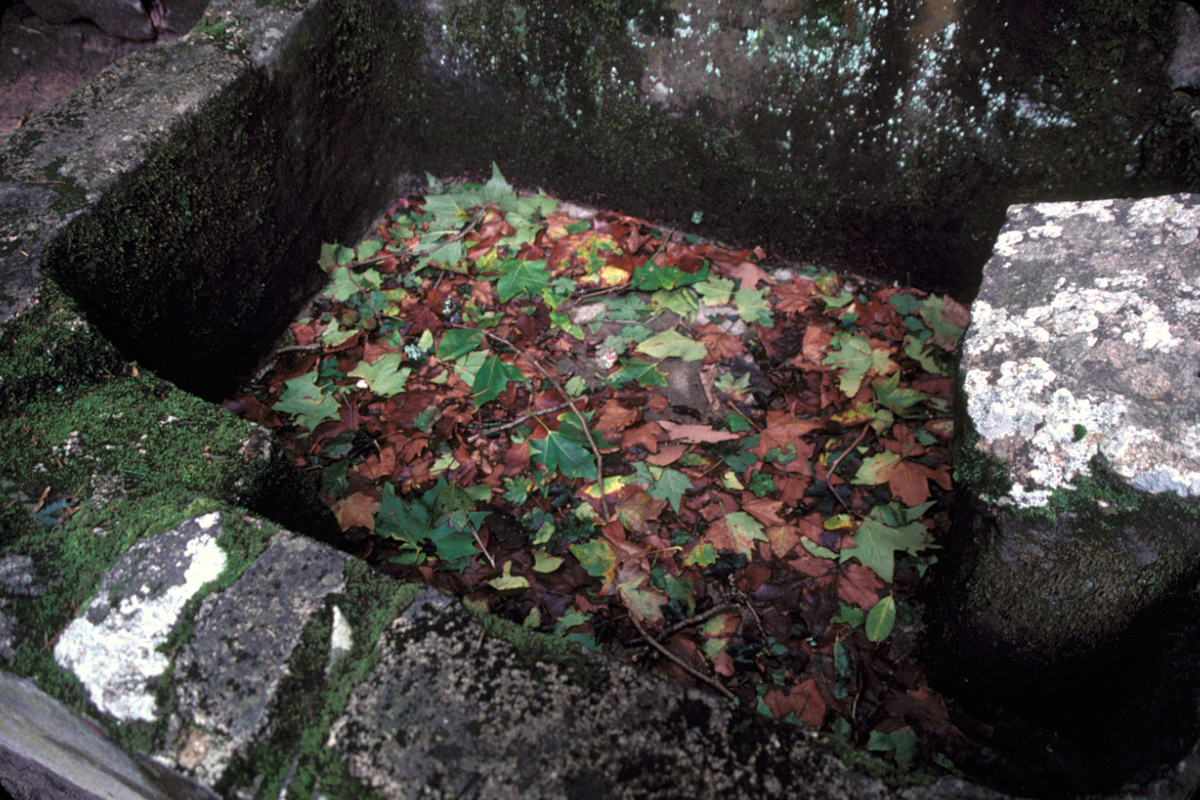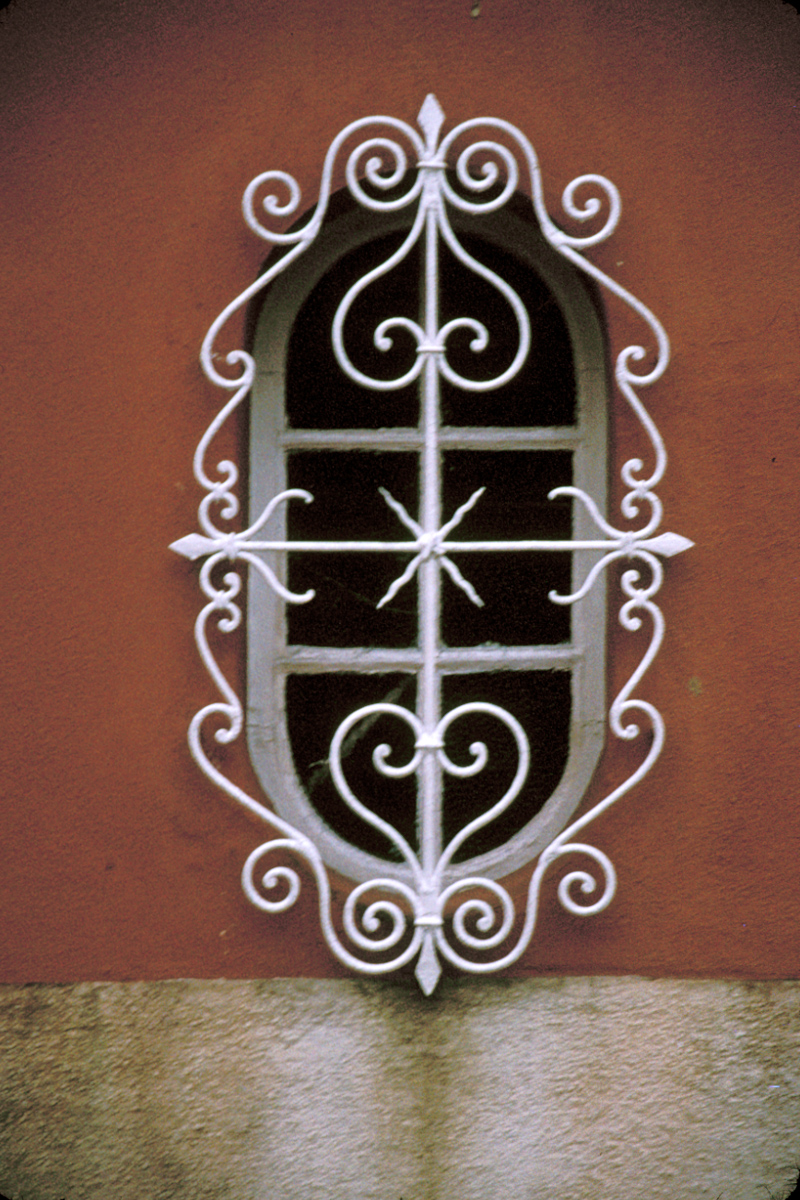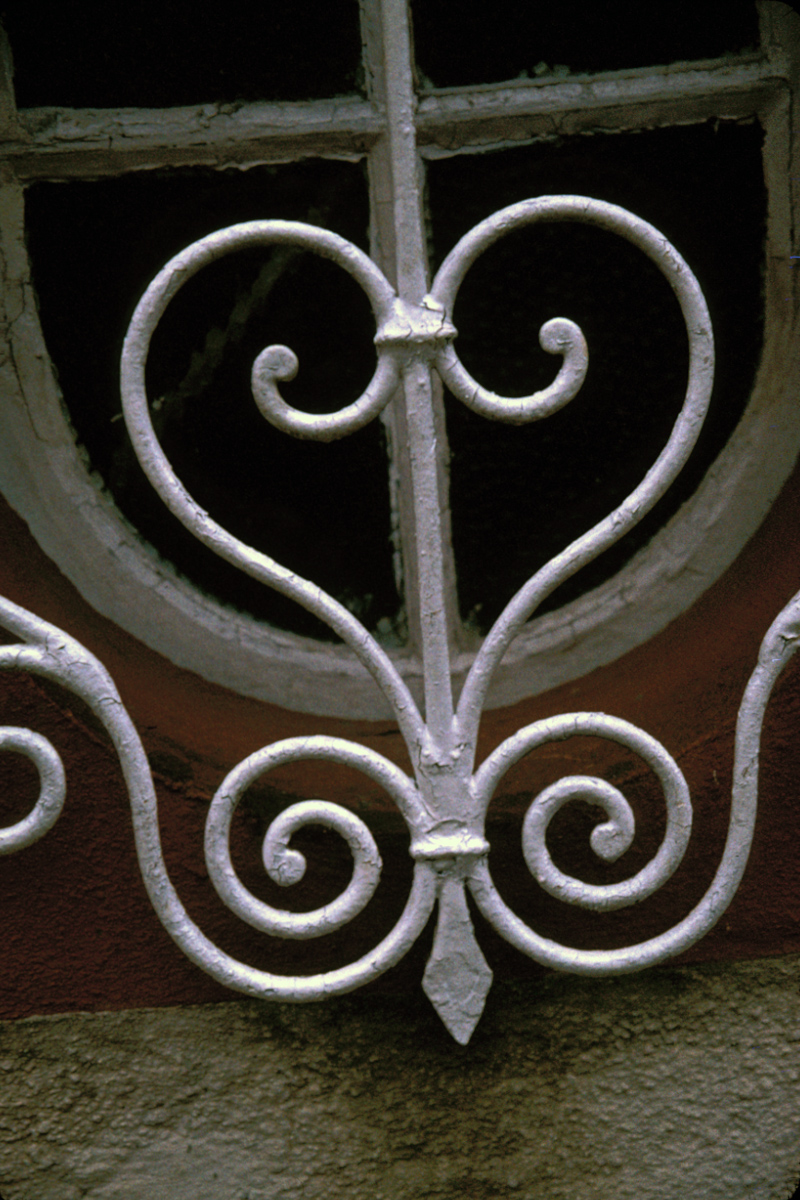Getting to Sintra was quite easy, since a commuter rail line runs directly from the Rossio station. Once we got into town, we were able to get right on a shuttle bus to take us up to the Pena Palace. We sat in front of a British couple on our way up to the palace. The husband had been to Portugal as a student in the 70s, and remarked that the country’s infrastructure had improved greatly since then. We found this interesting, since we had definitely noticed that it was a bit harder for us to get around in Portugal than it had been in Spain and Italy. Development really suffered during the Salazar dictatorship, and has been playing catch up ever since.
Getting There
The bus let us off a little ways down the hill from the palace, and we took the opportunity to have a bite to eat at the little snack bar there before making the short hike up the hill.
The Pena Palace is at the top of Sintra’s large hill, above the Moorish Castle. It seemed logical to begin there and work our way back down. It’s a “fantasy castle,” built as a summer residence by Prince Ferdinand in 1840. The architecture is whimsical and quirky, to say the least, looking a bit like someone crossed a fortress with Disneyland. Prince Ferdinand was German-born, an eccentric artist, and the husband of Portugal’s Queen Maria. After touring his palace, I think it is safe to say that this fellow was a character.
The architect, Ludwig von Eschwege of Prussia, was quite probably a character as well. The palace is covered with tiles, turrets, and strange bits of ornamentation, like the bay window that Dan captured nicely. Eschwege was evidently a modest fellow, too: he placed a statue of himself, gazing out to sea, a little ways out from the palace on the crest of the hill.
We looked around the exterior for a bit, and then headed inside to take the tour of the palace interior. It was richly furnished, as you might expect of a palace. The collection included furniture designed by Eiffel, and china designed by Ferdinand himself. I particularly liked the central atrium, a sunny space filled with plants. One of the palace legends is that the place settings at the dining table were left just as you see them today when the family fled during the revolution in 1910.
More of the Pena Palace
After touring the interior, we spent some more time exploring the outdoor courtyard. In keeping with the rest of the place, it contained quite a mixture of structures and decorations. The exterior walls sported a wide variety of tiles in different colors and patterns.
On one side, we could see two fairly large domes covered in gold tiles that twinkled in the sun. Another side had some Moorish-style arches and stucco work. The third side featured another turret and a small, tiled shrine with a spire on top. The arches on the fourth side opened out to lovely views over the plains to the sea. Between the view and the cool breeze, it was easy to understand why this had been a favored summer getaway!
Dan found these arches an irresistible backdrop for another installment of the long-suffering companion series. If you’ve read the rest of this travelogue, this will probably come as no great surprise. After we finished looking around the palace, we started hiking down the hill toward the Moorish Castle.
The Lily Pond
On our way down, we stopped in a small garden near the snack bar where the bus had let us off. What we saw was just a small corner of the Pena Park garden. Unfortunately, we didn’t have time to explore the rest of the garden, but we did squeeze in a few minutes to photograph at the lily pond.
The pond was definitely manmade; the enclosure was rectangular, about a foot and a half high and built out of bricks. This provided a convenient perch for me to stand on to get a better angle on the lilies. The pink blossom was just perfect, but I also enjoyed the shapes of the leaves and the reflection of the sky in the water. I quickly finished off a roll of film, and then we decided it was time to continue on to the Moorish Castle.
The Moorish Castle
By the time we got down to the castle, the weather had taken a turn from sun and warmth to overcast and cool. This lent an appropriately mysterious atmosphere to the castle as we approached it. The castle itself was built around 1000 AD, when the Moors had control of the region. However, the the hollows you can see in large boulders built into the castle wall are evidence that the site has been settled since Neolithic times. The castle was captured by the Christians when they regained control of the area in 1147. Much renovation occurred in the 19th century, including the building of a “romantic ruin” near the castle entrance.
It was pretty neat to walk along the walls of the castle, and enjoy the views from the tops of the various towers. While we were climbing up and down the walls, though, we heard repeated loud booms off in the distance. They were probably just fireworks, but we didn’t know of any holiday or special occasion, so it was a little bit unnerving!
We met a Czech fellow named Andre at the top of the highest turret on the castle wall. Dan chatted with him for a little while about the Czech Republic and Prague, which he visited a few years ago. And then, it was getting near closing time, so we wound our way back along the walls to the exit.
Last Looks
We followed a hiking trail, and then the road, the rest of the way down the hill. It was a pleasant walk, and gave us a view down into the town as we went. We also found a couple more examples of hearts in ironwork, as you can see in the gallery. It was easy to find our way back to the train station, and the ride back was quick and uneventful.
Once back in Lisbon, we stopped briefly at the hotel to freshen up, and then struck off walking in a direction we had not yet explored, hoping to find a place for dinner. It wasn’t very late, but it was Sunday, and we initially didn’t see much that was open. After a couple of block, though, we found a small neighborhood place. The restaurant’s decor was simple and unassuming, but the service was friendly and they served good, hearty food. Dan’s entree was a real standout: fejoiada, a stew with made with pork, beans and sausages, and served with a vinegary tomato salsa. It was very tasty!
We finished dinner fairly early, and headed back to the hotel. It was time to organized and pack, then try to get a good night’s sleep in preparation for a long day of traveling home.
